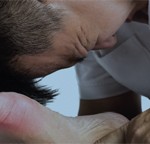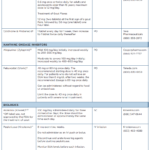References
- Neogi T, Felson D, Niu J, et al. Association between radiographic features of knee osteoarthritis and pain: Results from two cohort studies. BMJ. 2009 Aug 21;339:b2844.
- Neogi T. Clinical practice. Gout. N Engl J Med. 2011 Feb 3;364(5):443–452.
 John O’Shea of NIAMS Receives 2021 Harrington Prize for Innovation in Medicine
John O’Shea of NIAMS Receives 2021 Harrington Prize for Innovation in Medicine
By Gretchen Henkel
In early April, John J. O’Shea, MD, the scientific director and chief of the Molecular Immunology and Inflammation Branch of the National Institute of Arthritis and Musculoskeletal and Skin Diseases (NIAMS), was awarded the eighth annual Harrington Prize for Innovation in Medicine. Dr. O’Shea shared the award with Warren J. Leonard, MD, an NIH Distinguished Investigator at the National Heart, Lung, and Blood Institute (NHLBI).
The co-recipients delivered the Harrington Prize Lecture at the 2021 joint meeting of the Association of American Physicians, the American Society for Clinical Investigation and the American Physician Scientists Association. For Dr. O’Shea, the occasion offered an opportunity to reflect on the full-circle aspect of his groundbreaking work with the signaling protein JAK3 (Janus kinase 3).
He recalls presenting his work about the cloning of the protein at a 1993 research summer conference of the Federation of American Societies for Experimental Biology (FASEB) in Saxtons River, Vt. An encounter with a former colleague at that meeting eventually led to a collaboration with Pfizer to develop interventions targeting Janus kinases (JAKs) to treat autoimmune disease. Since that time nine JAK inhibitors (jakinibs) have been approved by agencies around the world to treat various arthritides, dermatitis, inflammatory bowel disease, graft vs. host disease, myeloproliferative neoplasms and COVID-19.
Dr. O’Shea credits the NIH’s Collaborative Research Agreement and Development Award as a “terrific mechanism” for allowing government-industry cooperation in drug development. He also praises the open relationship with Pfizer research and development, including the creative approach and scientific rigor that the company brought to the project, resulting in the development of tofacitinib.
Dr. O’Shea had been fascinated since medical school with ICU patients who exhibited acute inflammatory syndromes—suffering from “what we call cytokine storms today,” he says. A rotation in a lab working on the search for interleukin (IL) 1 at SUNY Upstate Medical Center eventually led to his joining the NIH. There he encountered researchers such as Anthony Fauci, MD, who was using cyclophosphamide, a cancer drug, to treat autoimmune disease—“very controversial at the time,” Dr. O’Shea says.
Dr. O’Shea says he was “very fortunate” to be in the same NIH lab as Dr. Leonard, who discovered the IL-2 receptor alpha chain, and its mutation in x-linked, severe combined immunodeficiency. Dr. O’Shea predicted there was an association between JAK3 and the common gamma chain, and an ensuing collaboration with NIH post-doc Luigi Notarangelo, who had a patient with severe combined immunodeficiency, led to targeted drug-development efforts.
“As much as all of us love to be recognized for our specific work, none of this gets done without effective teamwork,” he says. “I am grateful for being at the NIH and having the opportunity to make a difference.”



